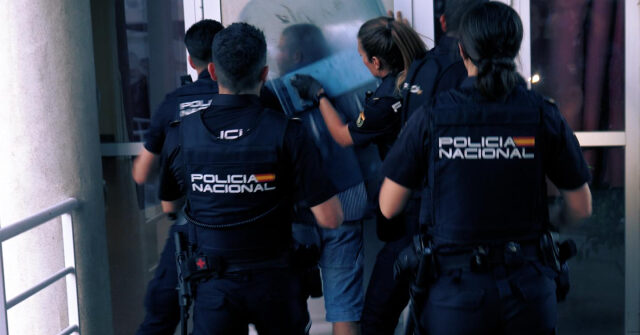Authorities in Spain recently made significant advancements in combating organized crime by arresting 14 individuals linked to a Sinaloa Cartel cell involved in drug trafficking, ransom kidnappings, and murders. This operation led to the dismantling of a clandestine laboratory where cartel members had been extracting synthetic drugs concealed within clothing items intended for smuggling into Europe. The Spanish National Police, along with the Catalonian Mossos d’Esquadra, has taken a strong stance against criminal organizations, aiming to clamp down on the growing influence of drug cartels operating within their territory.
The investigation was sparked by a kidnapping case that occurred in early June when a man was abducted, and his family was coerced into paying a ransom of 240,000 Euros for his release. Despite an initial payment processed through a cryptocurrency wallet, the victim’s body was discovered on August 5 in a state of significant decomposition in Cataluña. This grim discovery prompted a more extensive investigation into the circumstances surrounding the murder, leading law enforcement to uncover deeper connections between the victim and the Sinaloa Cartel.
Through investigative efforts, authorities established that the victim had a business relationship with cartel members and had traveled from Italy to meet with the group’s leadership before his abduction. The circumstances of the kidnapping unfolded between May 31 and early June, when relatives of the victim from Kosovo received ransom demands accompanied by proof of life photographs. State investigators meticulously traced the man’s movements, eventually uncovering that he had been held captive at a stash house in Barcelona before being relocated to Tarragona, which is where his body was ultimately found.
As the investigation progressed, law enforcement identified multiple members of the Sinaloa Cartel cell involved in the trafficking of drug-infused garments from Mexico to Europe. This operation included a sophisticated system for extracting the drugs from clothing items and repackaging them for distribution on the streets. The complexity of the cartel’s operations highlighted their resourcefulness and capacity for maintaining clandestine activities even in international jurisdictions.
In culmination of their efforts, Spanish authorities executed a series of strategic raids across multiple locations linked to the cartel cell. These included five residential properties, a local restaurant believed to be a front for operations, and the clandestine drug laboratory. The operation resulted in the arrests of a diverse group of individuals aged between 30 and 70 years, reflecting the range of participants in this criminal enterprise and the organized nature of the cartel’s operations in Spain.
The case sheds light on the intricate network of international drug trafficking and the horrifying realities of cartel-related violence. With the Sinaloa Cartel being one of the most notorious criminal organizations in the world, authorities recognize the importance of ongoing collaborations between nations to tackle the pervasive influence of these groups. As authorities continue to pursue justice for the victim and work to dismantle such organizations, these arrests signal a significant and ongoing effort to combat drug-related crime in Spain and beyond.

